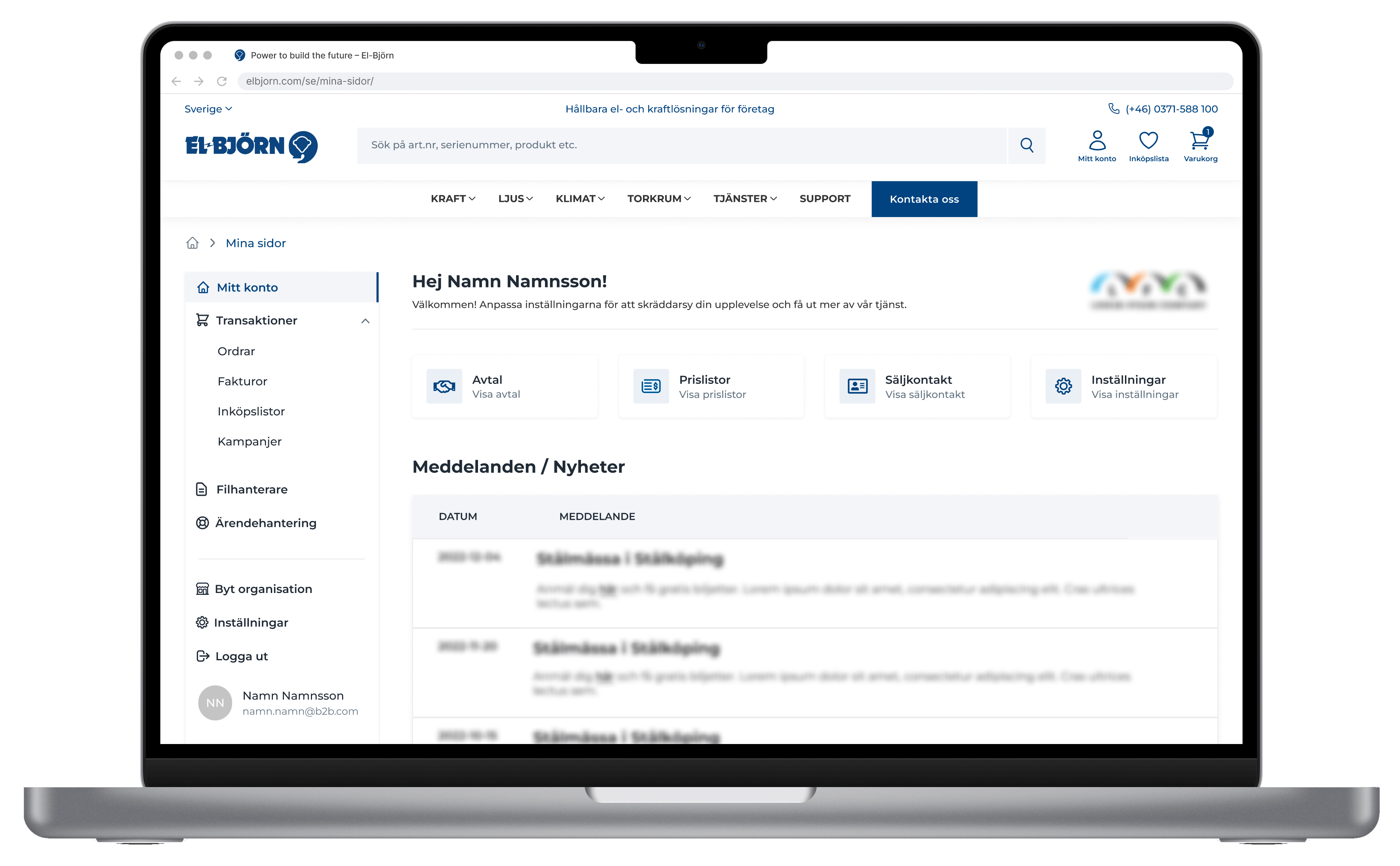B2B buyers have changed their behaviour. More and more want to search for information, compare products and place orders online. For companies, this shift is both a challenge and an opportunity. With the right strategy, digital sales can become one of the most profitable channels.
So how do you increase your B2B sales online? Here are five areas that can deliver results – both in the short and long term.
Understand your customers and their digital journey
Analysera kundernas behov
In B2B, purchases are often complex. Several people are involved, and decisions take longer compared to B2C. That makes it essential to understand how customers move through the buying journey. What needs do they have when they start searching? What helps them take the next step?
By analysing data from your website, CRM and customer interactions, you can spot bottlenecks and create a smoother buying experience.
The difference between B2B and B2C
B2C often revolves around emotions and impulse purchases. B2B is built on relationships, contracts and long-term commitments. Buyers expect transparency, access to detailed information and a system that simplifies their everyday work.
A successful B2B ecommerce is not just a store. It is a tool that helps the customer succeed in their business.
Create a personalised experience
When a customer logs in, they should immediately see their prices, their contracts and products that are relevant to them. Personalisation can also mean recommending complementary products or making it easy to repeat a previous order.
The more relevant the experience, the more likely the customer is to come back and increase their digital purchases.
Build a platform that supports growth
Features that make a difference
To boost online sales, your platform needs features that benefit both customers and your internal teams, such as:
- Efficient handling of large order volumes
- Online request-for-quote functionality
- Support for multiple languages and currencies
- Flexible pricing and campaign management tools
A user-friendly solution encourages more customers to buy digitally.
Integration with ERP
One of the biggest success factors is seamless integration with ERP, CRM and PIM. When customer data, stock levels and product information are updated in real time, you create a complete ecosystem that benefits everyone.
Integrations reduce manual work, minimise errors and build trust with customers.
Automate order flows
The more you automate, the more resources can be directed to sales. Automated order flows, invoicing and payments speed up the process for customers while lowering costs for you.
Optimise product information and content
Product data as a sales driver
In B2B, product information is often extensive and complex. This makes PIM a competitive advantage. With accurate and consistent product data, customers can easily find the right product while your SEO improves.
Customer-specific pricing and agreements
Handling multiple price lists is a common challenge. Your ecommerce needs to show the right price instantly when a customer logs in. That saves time, reduces errors and makes the buying process smoother.
Content that builds trust
Guides, tutorials, blog articles and case studies help customers make informed decisions. At the same time, they strengthen your brand. An ecommerce site that also serves as a knowledge hub quickly becomes a natural part of the customer’s workflow.
Strengthen sales and customer relationships
Self-service that drives loyalty
Many customers prefer to place orders themselves, whenever it suits them. By offering order history, favourites lists and easy reordering, you give them control and flexibility. Meanwhile, the pressure on sales and support decreases.
Equip your sales teams
Good ecommerce does not replace sales teams – it makes them more effective. With access to customer order history, sales reps can provide better advice, recommend the right products and work more proactively.
Customer portals that deepen relationships
A customer portal can bring everything together: contracts, invoices, deliveries and support cases. This builds long-term relationships and positions you as a partner rather than just a supplier.

Omnichannel as a strategy
Customers move across multiple touchpoints – website, portal, sales reps and support. By creating a consistent experience where information is always up to date, you reduce friction and build a brand that feels professional and reliable.
Work data-driven and long-term
Track the right KPIs
To increase sales, you need to measure the right things. Key metrics include conversion rate, average order value, customer lifetime value and the share of orders placed through self-service.
Regular follow-up gives you a clear picture of what works and where adjustments are needed.
Continuous improvement
Ecommerce is never finished. By testing, analysing and optimising small elements, you can steadily increase sales. A/B testing of content, design and pricing can provide valuable insights.
Keep track of costs (TCO)
Profitability is not just about revenue. Cost control is equally important. Many companies underestimate the long-term cost of maintaining and developing a platform.
By focusing on Total Cost of Ownership (TCO) and choosing a flexible, scalable and cost-efficient solution, you can protect margins while investing in growth.
Ensure scalability
Your ecommerce needs to grow with your business. That includes both capacity and functionality. A platform that can easily adapt to new markets, languages and currencies will save you from costly rebuilds in the future.
Conclusion: how to increase your B2B sales
Succeeding with B2B sales online is about combining the right technology with customer focus. A platform that is scalable, integrated and built for B2B makes your business more efficient. Add relevant content, personalisation, self-service and a data-driven approach, and you have a solid foundation for growth.
It is not just about driving more orders online. It is about creating a digital channel that customers actually want to use, again and again.

